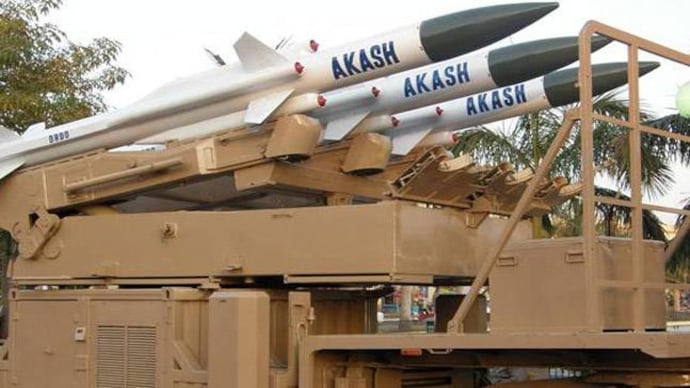Akash missiles, aimed at downing Chinese fighter jets in northeast, not installed: CAG
Indigenously built Akash, surface-to-air missiles that were to be positioned in the vulnerable Siliguri corridor (also referred to as the Chicken's neck) to down incoming Chinese Air Force fighters, have not been installed, says a CAG report.

Indigenously built Akash, surface-to-air missiles (SAM) that were to be positioned in the vulnerable Siliguri corridor (also referred to as the Chicken's neck) to take-down incoming Chinese Air Force fighters, have not been installed, the Comptroller Auditor General of India (CAG) has observed.
What is worse, at least 30 per cent of the missiles supplied to the IAF have been found to be faulty.
The stand-off at Doklam in Bhutan between Indian and Chinese troops is a few kilometres away from the Siliguri Corridor. National Security Advisor Ajit Doval met his Chinese counterpart Yang Jiechi on the sidelines of the BRICS NSAs meeting in Beijing.
- The CAG calls the missiles "strategic" and says "the missile systems were to be installed at six designated sites between 2013 and 2015". But till date, none of the missiles systems have been installed. The CAG report was placed before the Parliament today.
- The total cost of the project was about Rs 3,900 crore, out of which the IAF has already paid Rs 3,800 crore.
- The IAF was to deploy six Akash missile squadrons east to counter China's build-up of military infrastructure all along the Line of Actual Control (LAC). China has eight fully-operational airbases in Tibet.
- And, that isn't all. The CAG report says that about 30 per cent of "strategic missiles" made by BEL - a defence public sector unit - failed when they were test-fired. "The larger issue is that 30 per cent failure rate of the sample tested puts a question mark on the reliability, based on which 95 per cent of the payment was already done", the CAG said.
- Even worse, the CAG has observed that a life-span of at least 70 missiles was reduced by more than three years because there was no storage facility available. Each Akash missile costs a few hundred crores.
- The life-span of other 150 missiles was diminished by at least "two to three" years and that of another 40-odd missiles by at least a "year or two years". The Akash missiles, which have a range of about 25 km, have a lifespan of about 10 years "from the manufacturing date" and they need to be stored under controlled conditions.
- "Due to delay in the creation of prescribed storage rooms, all the missiles received during April 2014 to May 2016 were kept at alternate facilities that lacked the required storage conditions", the CAG report says and adds that at least 71 missiles were affected by "moisture."
- The then UPA government cleared the deployment of Akash missiles in 2010 in the Siliguri corridor as Indian changed its China policy from "dissuasive to deterrence".
- After the 1962 debacle, India followed a policy of dissuasion against China. Areas along the Line of Actual Control (LAC) were deliberately left under-developed, roads weren't built to dissuade China from going on the offensive.
- But as China added to border infrastructure, and added troops and muscle to its military, India moved to a posture of deterrence, positioning troops, fighters, along the border.
ALSO READ |
India to develop missiles that can hit all of China even from southern bases
Russia to supply S-400 missile system to India: Why Pakistan, China should worry
Tejas successfully test-fires derby air-to-air beyond visual range missile
ALSO WATCH VIDEO: Doklam standoff: Will conflict with India be disastrous for China?